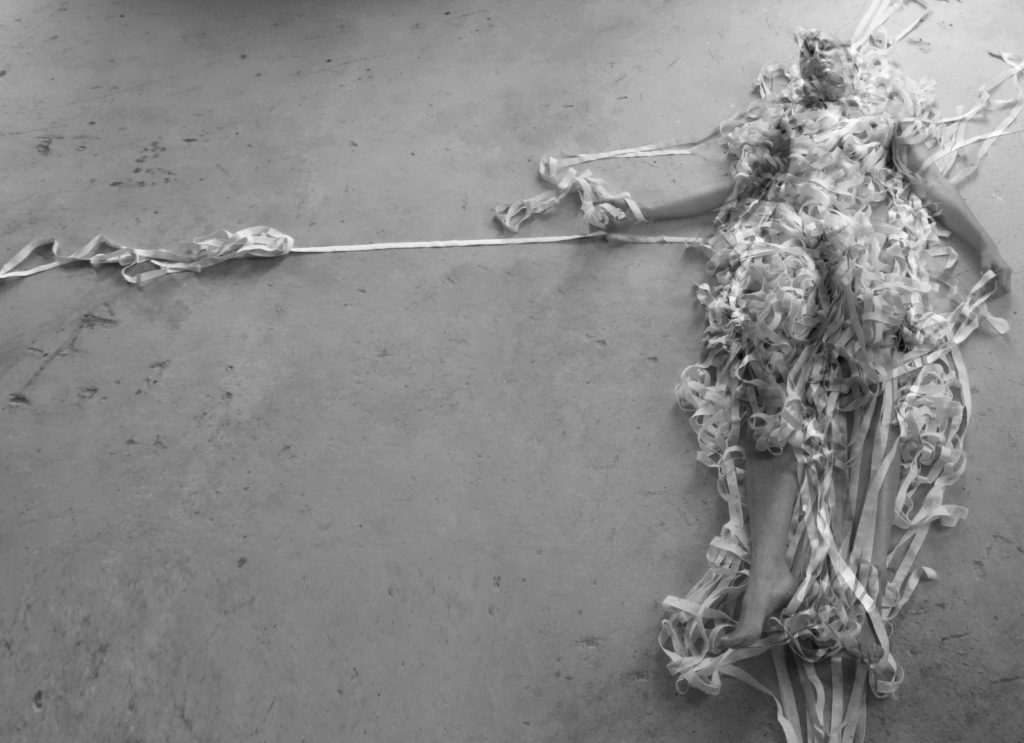
Boryana Petkova, photography USHA, 2024
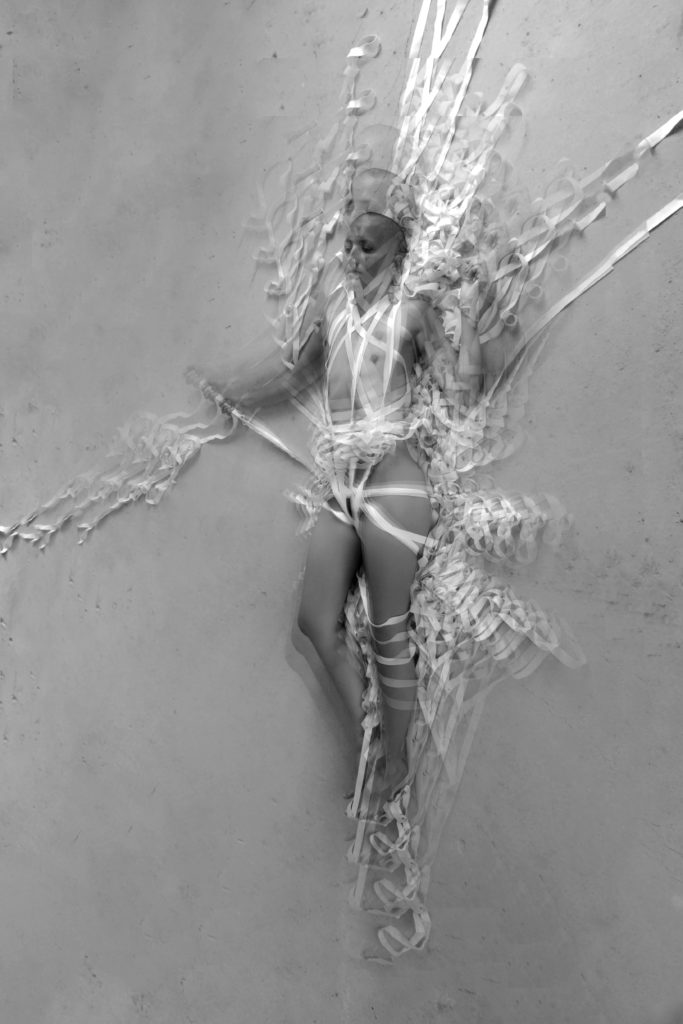
Boryana Petkova, photography USHA, 2024
I tied the différents part of myself – contradictions, histories and identities into a fragile system of interdependence.
Strangers are connected with 400m of elastics into a shared circle. Strangers from opposing social worlds—those living at the margins, those navigating invisible struggles, and those holding privilege and power. Bound by physical tension, not ideology, the elastic becomes both a literal and symbolic act of connection and resistance.
As I jump into the center, the bands wrap around my body, pulling us slowly together. The tension marks our shared fragility, where difference becomes relation. In this web, survival is no longer individual but collective.
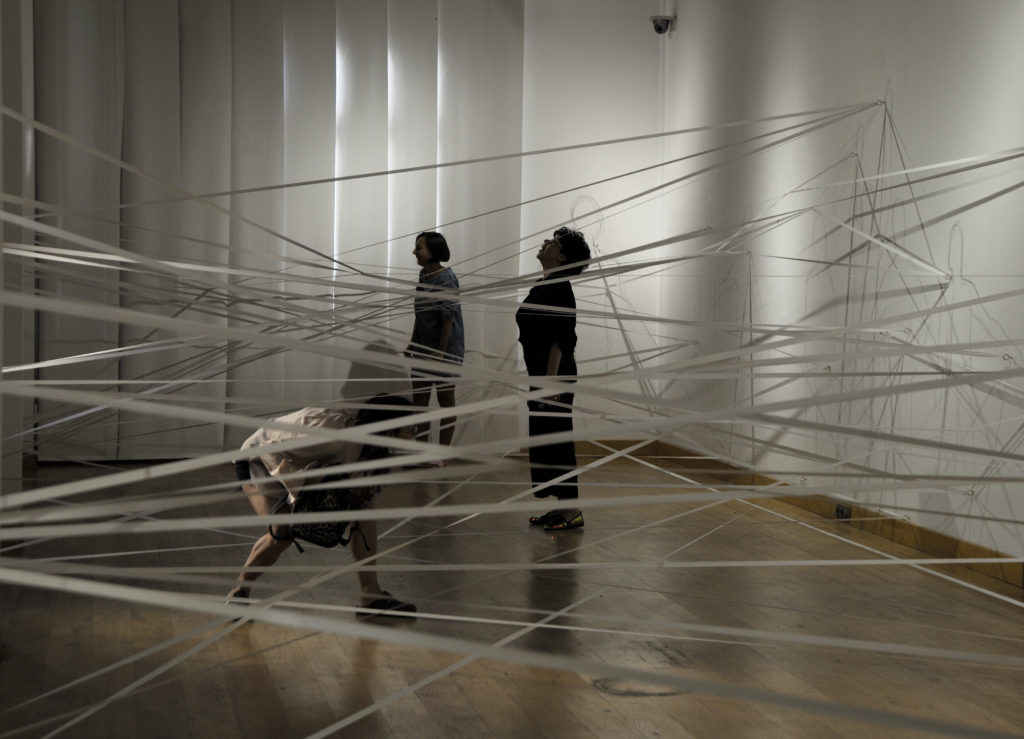
photo credit : Liubomir Kovachev
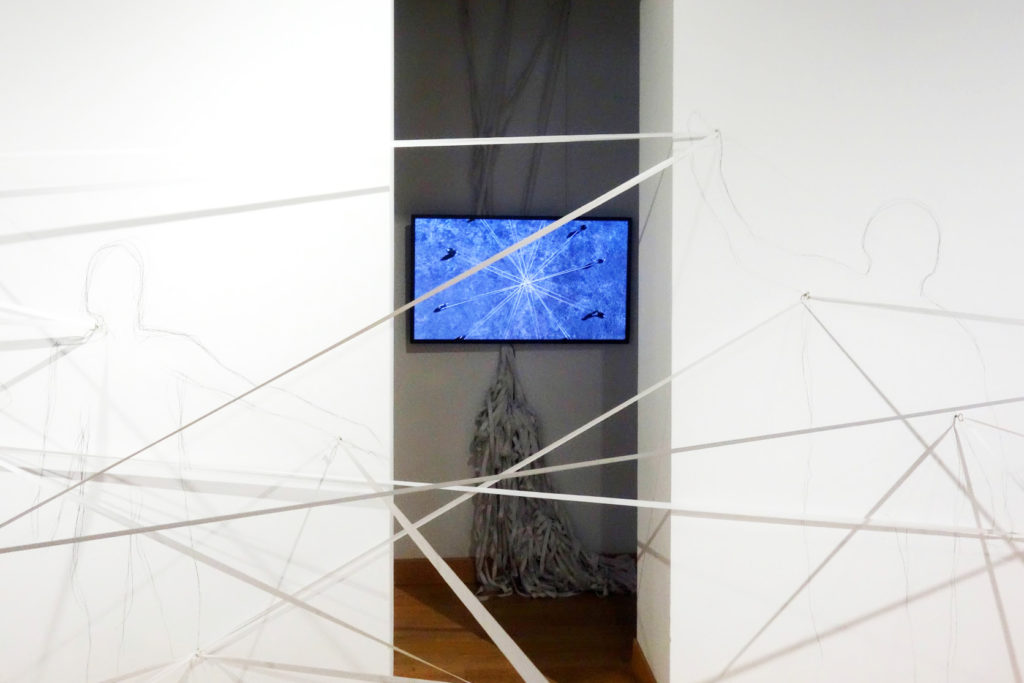
photo credit : USHA
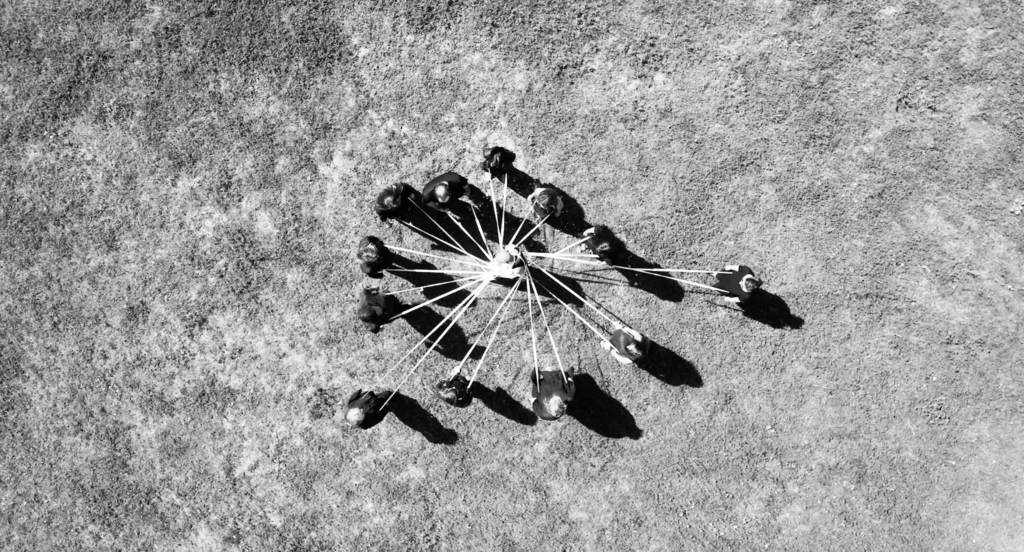
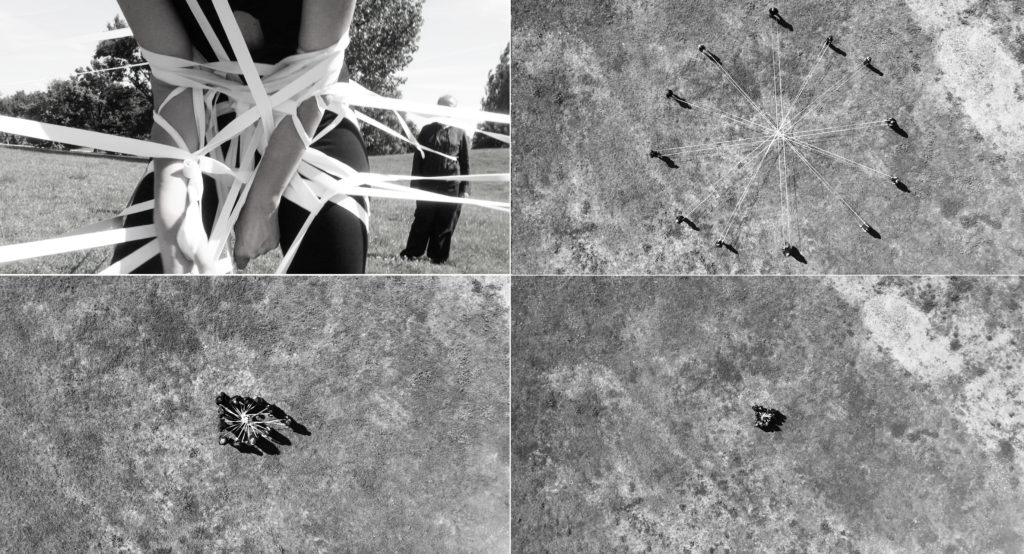
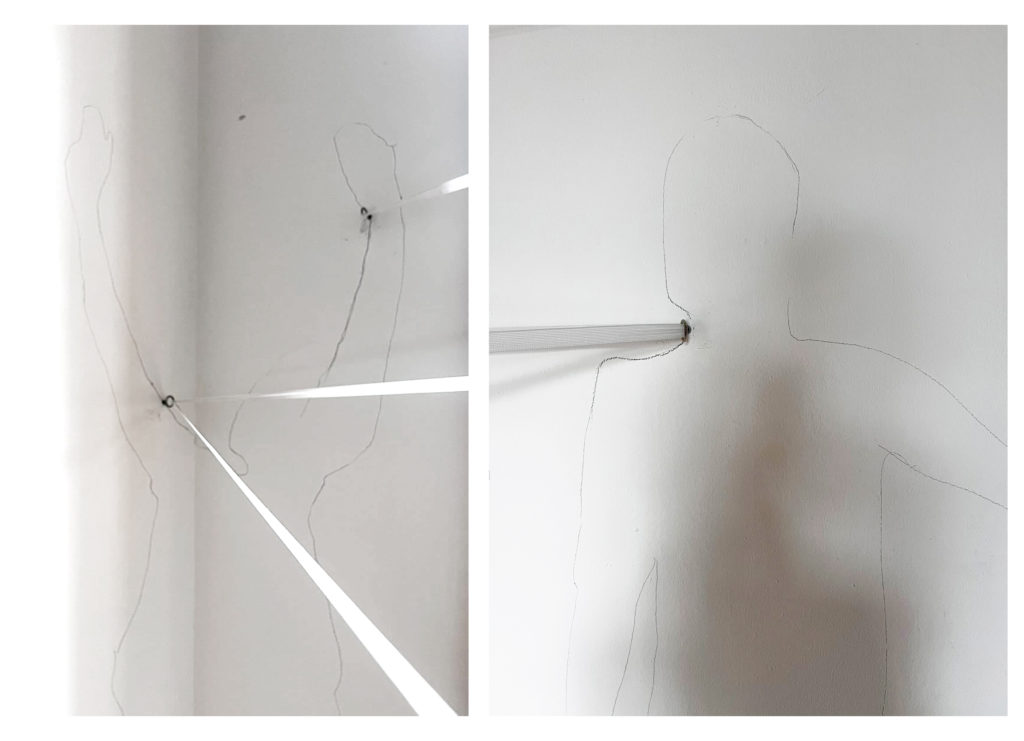
Bloodless bonds focuses on relationships with characters who have functioned as cornerstones in Petkova’s personal story, arranged like figures from the well-known children’s elastics jumping game. It goes under different names and, with slight deviations in the rules depending on the cultural context, is played by children in countries across Europe, Asia, Africa, North and South America. The game is typically played by three people—two stretch the string tautly around their ankles, and a third must accomplish certain moves without tripping or becoming entangled. In Petkova’s performance, the pieces of elastic are a complex diagram where multiple human relationships intersect, making jumping almost impossible. The bands connecting the symbolic figures create random intersecting directions and, in this complex knot, the body is subjected to a painful physical act of entanglement and disentanglement while seeking the limit of endurance. Through this act, the consequences of our relationships with others are seen as an inexorable imprint on the psychological processes of our perception of the world. Here, the line—an extremely crucial element of the artist’s practice—is treated as an object that creates extreme tension on and discomfort for the physical body. It does not draw a path to facilitate its movement; on the contrary, it is an obstacle that must be unravelled and overcome in the context of many other lines set by new connections in fresh, unexpected trajectories.
Irina Batkova